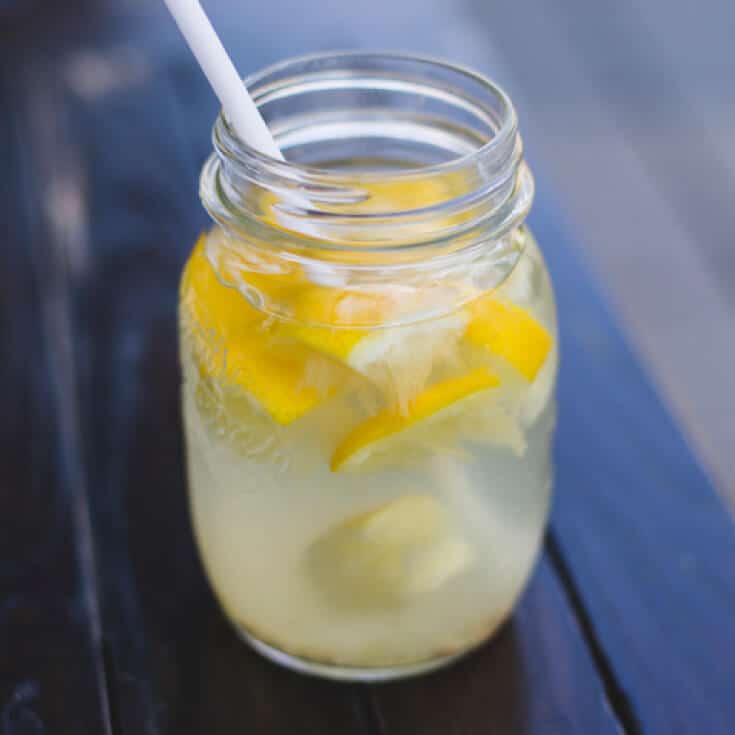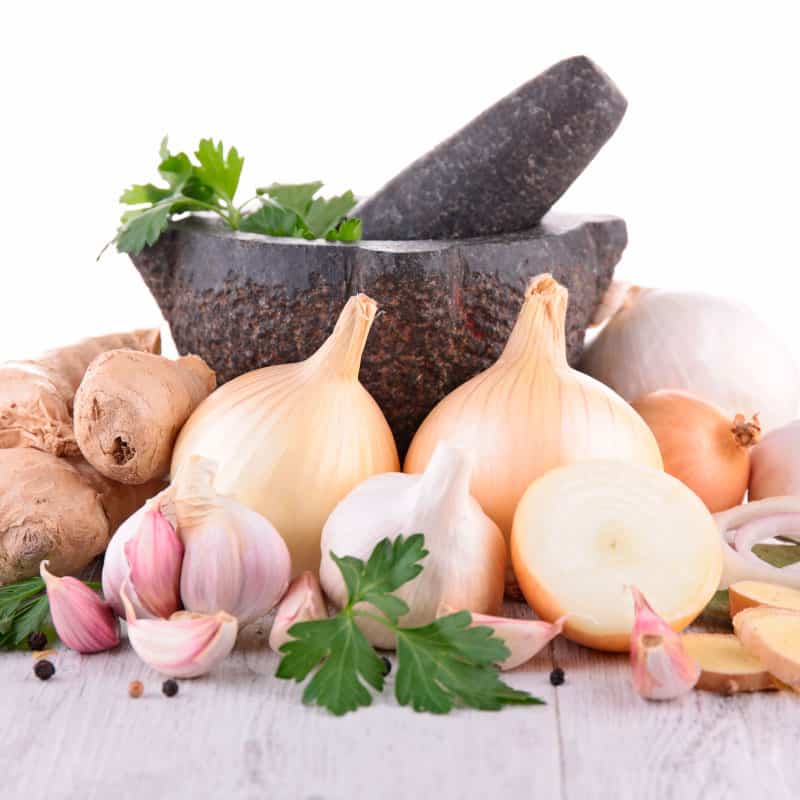This Dr. Axe content is medically reviewed or fact checked to ensure factually accurate information.
With strict editorial sourcing guidelines, we only link to academic research institutions, reputable media sites and, when research is available, medically peer-reviewed studies. Note that the numbers in parentheses (1, 2, etc.) are clickable links to these studies.
The information in our articles is NOT intended to replace a one-on-one relationship with a qualified health care professional and is not intended as medical advice.
This article is based on scientific evidence, written by experts and fact checked by our trained editorial staff. Note that the numbers in parentheses (1, 2, etc.) are clickable links to medically peer-reviewed studies.
Our team includes licensed nutritionists and dietitians, certified health education specialists, as well as certified strength and conditioning specialists, personal trainers and corrective exercise specialists. Our team aims to be not only thorough with its research, but also objective and unbiased.
The information in our articles is NOT intended to replace a one-on-one relationship with a qualified health care professional and is not intended as medical advice.
Hypotension Causes (+ 5 Steps to Healthy Blood Pressure)
March 13, 2018
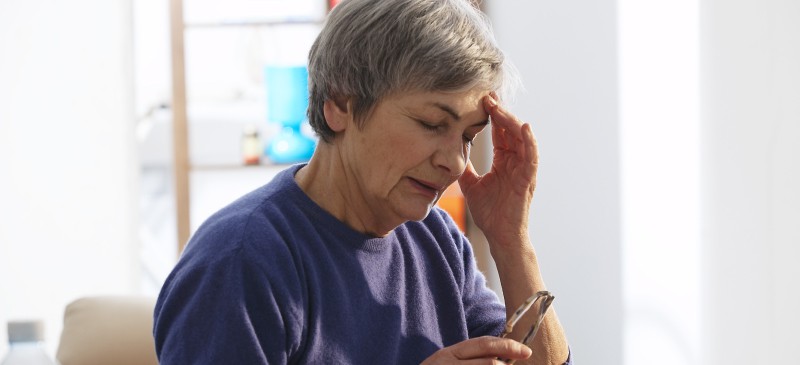
Hypotension is low blood pressure. Because healthy blood pressure can vary from person to person, hypotension is defined as a blood pressure that is lower than the expected normal value for a particular person.
Blood pressure can change throughout the day and is based on many things, including activities, medications and age. It’s important to know the cause of hypotension before trying to treat it. However, in many cases, people can achieve a healthy blood pressure using natural methods or medication.
What Is Hypotension?
Hypotension is blood pressure that is lower than what it should be based on a person’s expected healthy blood pressure range. It is the opposite of high blood pressure (hypertension).
A healthy blood pressure range depends on a person’s age, underlying health conditions, activity level and any medications they are taking. For most people, healthy blood pressure is about 120/80 mm Hg. Many physicians consider low blood pressure to be anything under 90 mm Hg systolic (the top number) or under 60 mm Hg diastolic (the bottom number). (1)
With hypotension, there is a low flow of blood through the body. This means the body may not be getting enough oxygen and nutrients. When that is the case, people experience the symptoms of low blood pressure. If the low blood pressure is severe or long-lasting, it can start to affect the brain, heart and other organs.
Hypotension by itself is usually not a problem. However, when it causes symptoms it may require treatment. That said, most hypotension is either mild or temporary. For example, you may consistently have low blood pressure that your doctor simply checks at every visit. Temporary cases may be caused by simple activities or changes, such as too much time in a hot tub or dehydration from a day in the sun.
When blood pressure gets very low or stays too low for too long, however, it can be life threatening. When this happens, it is called shock (extreme hypotension). Because hypotension can be dangerous in some cases, you should have a health care professional check your health if you suspect you have something other than passing, mild low blood pressure.
Signs and Symptoms
There are three main types of hypotension: orthostatic (also called postural hypotension), postprandial hypotension, and neutrally mediated hypotension. They share some similar symptoms but have different causes and in many cases different treatments.
Hypotension symptoms include: (2)
- Dizziness or lightheadedness
- Fainting
- Blurry vision
- Nausea or vomiting
- Feeling tired or weak
- Confusion or trouble concentrating
Signs and symptoms that depend on the type of hypotension you have include: (1)
- Orthostatic/postural hypotension:
- Dizziness, lightheadedness or fainting when you stand up
- Blurry vision or fainting when you stand up
- Symptoms may sometimes be delayed, happening five or 10 minutes after changing positions
- Postprandial hypotension:
- Dizziness or fainting after eating
- Neurally mediated hypotension:
- Symptoms of low blood pressure after standing for a long time
Severe hypotension can also result from or cause shock, where the blood pressure drops severely and doesn’t come back up. You should get emergency help if you have any of the following signs and symptoms of shock: (1)
- Confusion
- Cold and clammy, pale skin
- Weak but racing pulse
- Fast, shallow breathing
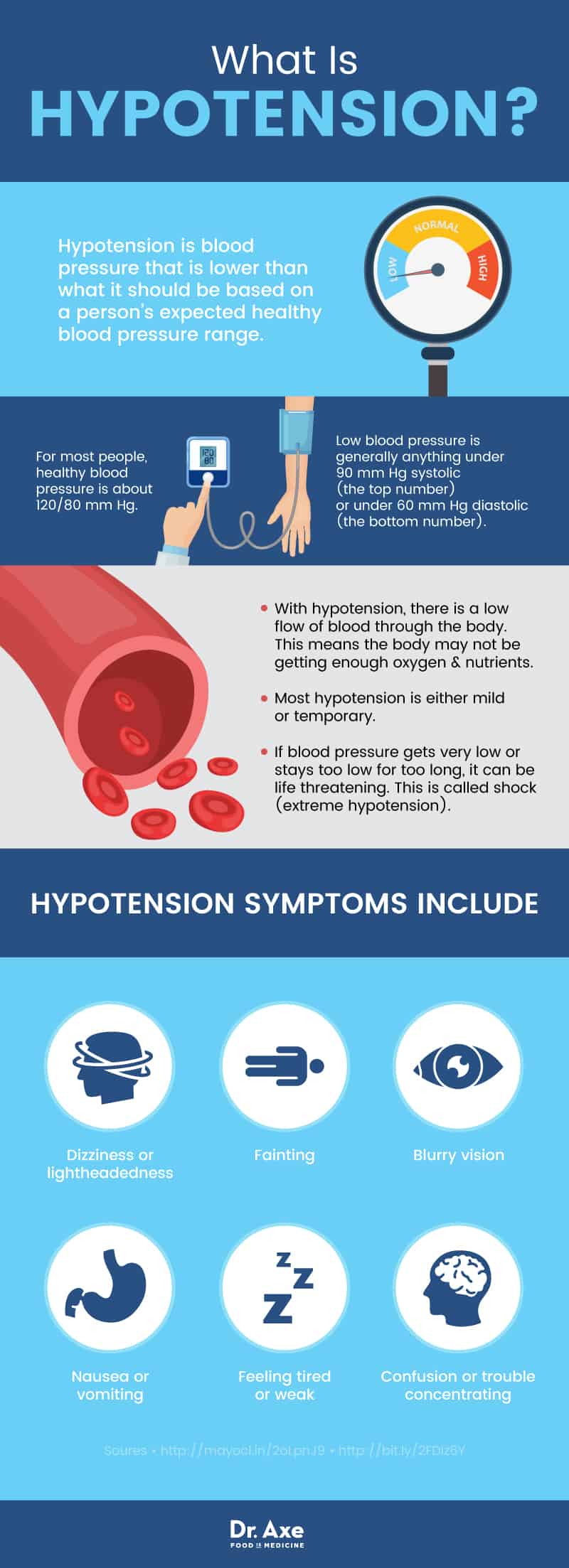
Causes and Risk Factors
General causes of hypotension include: (3, 4)
- Alcohol use
- Certain medications, such as anti-anxiety drugs, antidepressants, diuretics, heart medicines, surgery medicines and painkillers
- Nerve damage from conditions such as diabetes
- Dehydration or hypernatremia
- Heart failure or heart attack
- Shock
- Massive blood loss
- Severe allergic reaction (anaphylaxis)
- Blood infections
Just as symptoms vary by the type of hypotension you have, so do causes.
Orthostatic hypotension
Orthostatic hypotension can affect both young and older people. Dehydration is the most common cause of this type of low blood pressure. Other causes of orthostatic hypotension include: (5)
- Increased age
- Having another type of hypotension (such as postprandial hypotension)
- Heart problems such as heart failure or heart valve disease
- Serious infections such as sepsis
- Anemia
- Endocrine disorders, such as diabetes or hypothyroidism
- Parkinson’s disease or other central nervous system disorders
- Pulmonary embolism
- Taking medications such as diuretics (water pills), calcium channel blockers, ACE inhibitors, angiotensin II receptor blockers, beta blockers or nitrates
Postprandial hypotension
Postprandial hypotension is considered a type of orthostatic low blood pressure. It mostly affects older people. Symptoms usually just occur after a meal, when blood is directed toward digestion instead of circulation. Postprandial hypotension causes include: (1)
- High blood pressure
- Blood pressure drugs
- Nervous system disorders such as Parkinson’s disease
Neurally mediated hypotension
Neurally mediated hypotension is most common in children and young adults. Its cause is thought to be a miscommunication between the brain and the heart, causing a drop in blood pressure after standing for too long. (1)
Risk factors for hypotension include:
- Age 65 years and older
- Use of medications for high blood pressure
- Other health conditions, such as pregnancy, Parkinson’s disease, heart conditions and diabetes
Conventional Treatment
Just as with hypotension symptoms, hypotension treatment depends on the type of low blood pressure you have and its cause. However, conventional low blood pressure treatments often overlap with natural therapies — medication is rarely needed. In some cases, however, your doctor may adjust your other medications by changing the dose or switching the drug. In certain cases, medication for hypotension may be prescribed to narrow your blood vessels and increase the amount of blood pumping through your body. (6)
Natural Steps to Manage Low Blood Pressure
Natural ways to achieve a healthy blood pressure depend on the cause of your hypotension. It’s not always bad to suffer from hypotension — indeed, in some cases it’s totally harmless and goes unnoticed. But when it causes annoying or dangerous symptoms, you can usually take simple steps to bring your blood pressure up or avoid future dips altogether.
1. Stay hydrated
Having a low volume of blood in your body is part of the problem in hypotension. By staying hydrated, you can help make sure there is enough fluid in your body to have a strong blood supply and to help your tissues and organs work the way they should. Simple ways to stay hydrated include: (7)
- Drink plenty of fluids. You should drink five to eight 8-ounce glasses of water or other liquid per day. You may also wish to occasionally drink sports drinks that contain sodium and potassium, since a decrease in potassium can lead to hypotension as well.
- Avoid or limit alcohol. When you drink alcohol, it causes your blood vessels to expand (dilate). This can cause a dip in blood pressure.
- Avoid diuretics. Diuretics or “water pills” can cause your body to lose too much fluid. If you take prescription diuretics, speak with your doctor before changing doses or stopping treatment. Your doctor may be able to reduce symptoms of low blood pressure by adjusting your prescription or swapping it for a different drug.
- Drink more during hot weather or when ill. When your body is under stress or sweating a lot due to exertion, heat or fever, you need extra fluids to keep your body well hydrated.
2. Pay attention to body positions
Sitting up, standing up and standing for long periods of time can all trigger low blood pressure symptoms. Many people can use these tips and strategies to avoid or reduce their symptoms when changing positions: (7, 8)
- Stand up slowly. Whenever you change positions, do it slowly. This gives your body time to adjust and start pumping blood where it needs to go.
- Don’t cross your legs when sitting. Crossing your legs can compress the veins and cause blood to pool in your legs.
- Sit in bed before getting up. Slide your feet over the edge of the bed and sit on the edge for a few minutes. Then you can ease yourself slowly into a standing position. This allows a gradual ramp-up of your circulation.
- Don’t stand for long periods. This can cause blood to pool in your legs. If you must be on your feet without the chance to sit and rest, make sure your legs can be active. Try some of the counter-maneuvers below, or be sure to shift, flex and bend your hips, knees and ankles every 10 to 15 minutes.
- Try counter-maneuvers. These are isometric exercises to help get your blood circulating. They can help reduce or prevent symptoms or orthostatic hypotension. When you plan to change positions, are inactive (standing or sitting) for a long period of time, or if you start feeling symptoms, try tensing muscles for about 30 seconds using these techniques:
- Raise your toe or toes off the ground, keeping your foot down
- Cross and contract your legs, one at a time
- Contract both thigh muscles at once
- March slowly in place
- Raise up one leg at a time
- Squeeze a rubber ball or a towel
- Flex your arm muscles a few times
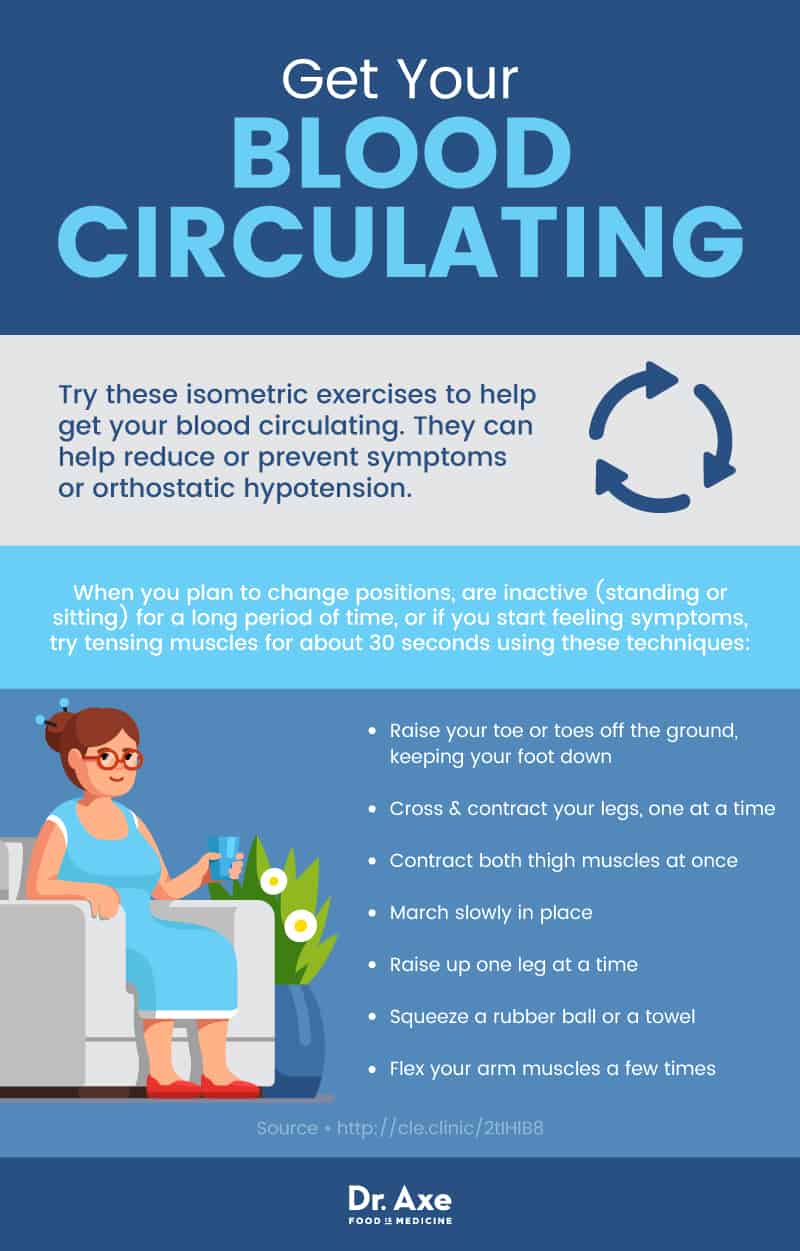
3. Make simple lifestyle changes
In many cases, knowing what causes hypotension can help you avoid symptoms. Low blood pressure can happen when your blood vessels expand (dilate) or when your blood pools during inactivity. Heat, inactivity and physical strain can lead to dips in blood pressure. You may benefit from some of these simple changes in lifestyle: (7)
- Wear compression stockings. These can help keep blood from pooling in your legs, which forces it to be more available to the rest of your body. That may make you less likely to have symptoms of low blood pressure.
- Exercise. Orthostatic hypotension can result from blood pooling in the limbs when you are inactive. The more your body is moving, the less chance blood has to pool and cause symptoms of low blood pressure. Over time, people who exercise more have fewer symptoms. Similarly, the less active you are, the more likely you are to have worse symptoms of orthostatic hypotension. However, certain types of exercise aren’t as safe as others. Try workouts that do not require much straining and holding your breath, such as swimming and recumbent biking.
- Raise the head of your bed. This may help your body improve its ability to circulate blood over time. It can be especially helpful for people with orthostatic hypotension who are also active during the day. (Prolonged bed rest can cause problems with blood pressure as well.) Try raising the head of your bed by about four inches by placing books, bricks or a board under the mattress (not the pillow).
- Avoid hot tubs and long, hot showers. Much like hot weather, these can cause your blood vessels to dilate. Keep showers or baths brief and warm and avoid hot baths and hot tubs altogether.
- Avoid physical strain. This includes everything from carrying heavy boxes to straining on the toilet during a bowel movement.
4. Eat for healthy blood pressure
In addition to staying hydrated, you can change your diet to help avoid low blood pressure. Of course, the dietary steps you take to increase blood pressure should only be done if you know the cause of your low blood pressure. For example, people who suffer from episodes of low blood pressure because of their otherwise high blood pressure should not follow a diet meant to increase blood pressure overall. For people with consistently low blood pressure, however, a doctor may agree that general dietary steps for increasing blood pressure may be a safe and effective way to avoid symptoms of hypotension.
Dietary suggestions for increasing blood pressure include: (9)
- Eat more salt. This can help increase blood pressure and can still be done without loading up on processed foods. Try adding smoked fish, olives, broth, cottage cheese, pasta sauce, salted nuts and tortilla chips to your diet.
- Eat foods high in vitamin B12. A deficiency in B12 can lead to anemia, which can cause hypotension. Try eating foods such as eggs, beef, sardines, lamb, feta or cottage cheese and fortified cereals.
- Try eating more folate-rich foods. These also can help keep blood pressure up. You can get more folate in your diet by eating foods such as garbanzo or pinto beans, liver meat, asparagus, spinach, lentils and broccoli.
- Drink caffeine. In reasonable amounts, caffeine can be very useful for people with low blood pressure. Caffeinated tea or coffee can cause a spike in blood pressure that may help avoid dips in blood pressure.
- Avoid high-carbohydrate foods. Your body works to digest these very quickly, which can result in a drop in blood pressure. High-carb foods include candy, sweetened cereals and drinks such as soda, cookies and cakes, bread products such as bagels and pizza, jellies and jam, and potatoes.
- Have small meals more often. This is especially important for people with postprandial hypotension. By eating small amounts, less blood may be diverted to digest the food, reducing the chances of a major drop in blood pressure after meals. However, to make sure you still get enough to eat, you may have to compensate for the small meals by eating more often.
5. Consider herbs and supplements
Do not take herbs and supplements to change your blood pressure until you have discussed their use with your doctor. Many herbs and supplements can interact with medications and cause health changes other than what you intend. In addition, the specific doses you may need will vary based on your diet, age, activity level and other health conditions.
Herbs and supplements that may increase blood pressure or help you achieve a healthy blood pressure include:
- Licorice: Licorice is known to increase blood pressure. However, consuming too much licorice can cause a depletion of potassium, which can lead to dangerously low blood pressure. If you choose to use licorice to increase blood pressure, moderate your diet to include potassium and avoid overconsumption of licorice. (10)
- Vitamin B12: Even a slight deficiency in vitamin B12 can cause hypotension. Supplements may help reverse hypotension in people for whom the deficiency causes the symptoms, according to a case study in the medical literature. (11)
- Vitamin D: A review of research studies found that vitamin D deficiency is linked to orthostatic hypotension. The effects seem particularly strong among older women. (12)
- Vitamin C: This may help blood vessels constrict to normalize blood pressure, especially in cases of shock and sepsis. (13)
- Ephedra: This herb can increase blood pressure. However, it can have dangerous effects on the heart when its use is not carefully moderated. Dietary supplements containing ephedrine alkaloids are banned in the U.S. The ban doesn’t extend to traditional Chinese herbal medicines, but users should keep in mind that there is a potential for serious heart problems from these sources as well. (14)
- Yohimbe: As an alpha-2 antagonist, yohimbine promotes sympathetic activity. According to a number of studies, yohimbe can increase blood pressure.
- Others: Speak to a healthcare professional before starting a new herb or supplement. Not all have been well-researched and they may not be safe for everyone. Other herbs and supplements linked to an increase in blood pressure include: (15)
- Ginger
- Aniseed
- Bayberry
- Ginseng
- Chasteberry
- Parsley
- Blue cohosh
- Vervain
- St. John’s wort
- Capsicum
- Pau d’arco
- Coltsfoot
- Guarana
- Cola and broom alkaloids
- Gentian
- Calamus amines
Precautions
- Do not attempt to self-diagnose or self-treat hypotension. Symptoms of this condition can be confused for a number of other health problems. In addition, treating yourself for low blood pressure can backfire, since some episodes of low blood pressure affect people who otherwise have high blood pressure. Always work with a health professional to develop a plan to achieve a healthy blood pressure.
- You can die if your blood pressure is too low. A dangerously low blood pressure level varies from person to person. A physician should review anything 90/60 mm Hg or lower (the most common hypotension definition) to find the cause. Over time, low blood pressure can lead to lack of circulating oxygen and nutrients to your organs. This can cause nerve damage and tissue death, making it hard for your organs to work properly. In time, this can lead to death. Alternatively, a sudden and extreme dip in blood pressure — caused by massive blood loss from a wound, for example — can put your body into shock. If normal blood pressure isn’t restored quickly, you can die.
- If your symptoms do not get better after making lifestyle or diet adjustments recommended by your doctor, let him or her know. You may need a medication to help get your blood pressure into a healthy range.
Final Thoughts
- Hypotension is low blood pressure.
- Causes of low blood pressure can include other health conditions (pregnancy, diabetes, etc.) as well as temporary problems (vitamin deficiencies or a serious infection) or even just sudden changes in position. Knowing the cause of your hypotension is very important for knowing how to treat it safely and effectively.
- In most cases, hypotension can be corrected without medication. Many people can make simple lifestyle changes to avoid the symptoms.
- In cases where natural remedies and lifestyle changes do not work, your doctor may recommend medication to raise blood pressure out of the hypotensive range.
Read Next: These 5 Heart Disease Tests Could Save Your Life (And Your Doctor Probably Isn’t Ordering Them)

